Dictionary of Space Concepts
What is the Dictionary of Space Concepts?
The Dictionary of Space Concepts (DSC) is a project by UNIVERSEH – the European Space University of Earth and Humanity. Starting in 2020, this Alliance of five European Universities decided to launch an online dictionary dealing with terms and concepts related to space sciences. It should be created and used by students, lecturers, researchers and citizens alike.
After an initial planning phase, the DSC was published in spring 2022. It opens up several opportunities for all members of the UNIVERSEH Alliance and interested citizens to contribute to the content of the DSC.
In our course "Terms and Concepts of Space" (to the registration) , students learn how to write a dictionary article and later on contribute several entries to the DSC. Students and other members of the UNIVERSEH Alliance can also submit articles for the DSC via an entry in here . Interested citizens can contribute in this entry platform.
Once submitted, these articles are reviewed by UNIVERSEH Alliance staff and, if necessary, edited before their publication in the Dictionary.
In this way, the DSC is a dynamic project that is constantly expanding in content and quality through constant contributions from students, staff and citizens.
Special | A | B | C | D | E | F | G | H | I | J | K | L | M | N | O | P | Q | R | S | T | U | V | W | X | Y | Z | ALL
A |
|---|
Absolute Magnitude | |||
|---|---|---|---|
Image/Video/Audio:
Short Definition:
Absolute magnitude is the measurement of the brightness of celestial bodies using inverse logarithmic calculations in astronomical calculations and expressed as a mathematical value. This process involves mathematically expressing their luminosity, as a hypothesis, by placing objects at an equal distance from the observer (10 parsecs that equals to 32.6 light years).
Detailed Definition:
Absolute magnitude is also called absolute visual magnitude, which is a hypothesis that predicts the mathematical calculation of the luminosity of different celestial bodies, taking into account fixed distances, and comparing the luminosities of these objects. The mathematical formula used to calculate this luminosity is as follows; Mv: Absolute magnitude m: Apparent magnitude d: Distance in 10 parsecs Mv = m – 2.5 log [d/10]² The apparent magnitude here, on an inverse scale, indicates how bright celestial objects appear to our eyes. Because it's an inverted scale, high numbers indicate dim objects and low numbers indicate bright objects. The brightest object known and measured on this scale has a value of -10, while the star Sirius has a luminosity of 1.4, and our sun has a luminosity of 4.8.
Etymology:
Absolute -from old Latin (absolūtus) (Absolute – Wiktionary. (n.d.). https://en.wiktionary.org/wiki/absolute) Magnitude -from old Latin (Magnus) (Magnitude – Wiktionary. (n.d.). https://en.wiktionary.org/wiki/magnitude)
Sample Sentence(s):
‘’When comet 289P/Blanpain was discovered in 1819, its absolute magnitude was estimated as {\displaystyle M_{1}=8.5}{\displaystyle M_{1}=8.5}’’ (Wikipedia contributors. (2023, January 13). Absolute magnitude. Wikipedia. https://en.wikipedia.org/wiki/Absolute_magnitude) ‘’Colour–magnitude diagram, in astronomy, graph showing the relation between the absolute magnitudes (brightnesses) of stars and their colours, which are closely related to their temperatures and spectral types.’’ (The Editors of Encyclopaedia Britannica. (1998, July 20). Colour–magnitude diagram | astronomy. Encyclopedia Britannica. https://www.britannica.com/science/colour-magnitude-diagram) Translations of Terms/Concepts into Partner Languages:
French:
Magnitude absolue German:
Absolute Helligkeit Polish:
wielkość absolutna Swedish:
Absolut magnitud Turkish: Mutlak Kadir
Links to Videos/Articles:
Absolute magnitude | astronomy. (n.d.-a). Encyclopaedia Britannica. https://www.britannica.com/science/absolute-magnitude Absolute Magnitude | COSMOS. (n.d.-a). https://astronomy.swin.edu.au/cosmos/a/Absolute+Magnitude Apparent and Absolute Magnitudes. (n.d.-b). https://www.phys.ksu.edu/personal/wysin/astro/magnitudes.html Michel van Biezen. (2014, April 9). Astronomy - Measuring Distance, Size, and Luminosity (18 of 30) Absolute Magnitude [Video]. YouTube. https://www.youtube.com/watch?v=yfsUhOPCMaM | |||
Accretion disc | |||
|---|---|---|---|
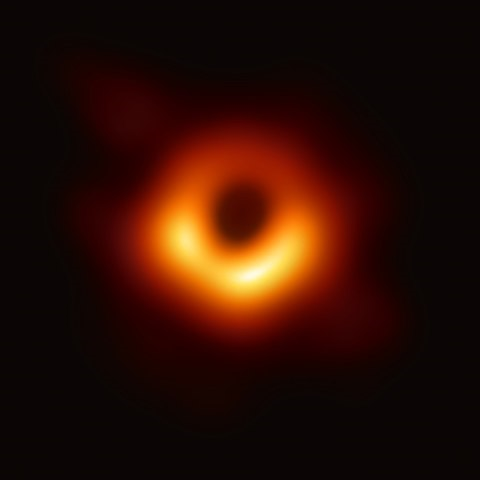
Source: https://en.wikipedia.org/wiki/File:Black_hole_-_Messier_87_crop_max_res.jpg Short Definition: An accretion disk is a structure, which is an amalgamation of gas, plasma or particles around the black hole. It is attracted by the gravitational pull and orbits the black hole while it slowly spirals into it, so it is a phenomenon that describes the way how a big celestial body amasses matter like black holes. Detailed Definition: One can not observe black holes or their event horizon, but since black holes have accretion disks, which are a type of structure and accumulations of gas, plasma or particles that were attracted by the huge gravitational pull of black holes. Humans are able to see those accretion disks, because the spinning matter is so fast, which in turn generates heat and emits x-rays and gamma rays. The high amount of angular momentum makes it impossible for the matter to simply fall into the black hole like it would on earth or one would think. Angular momentum decreases despite there being no friction in space, because of turbulence, which is caused by the fact that rotation increases the effect of magnetic fields. Temperatures in the accretion disks tend to vary quite a bit, which is determined by the composition of the accretion disk and its source. Temperatures can go from a few thousand to a few million Kelvin. Etymology: Accretion from Latin ad+ crescere-->accrescere--->accretionem Disk from Latin discus
Sample Sentence(s):
The accretion disk is the natural consequence of how gravitational pull attracts matter and makes it impossible to simply fall into the black hole. Many people think they saw a picture of a black hole, but in reality they only saw a picture of its accretion disk.
French: disque d’accrétion German: Akkretionsscheibe Polish: Dysk akrecyjny Swedish: Accretionsskiva Links to Videos/Articles: GMS: Black Hole Accretion Disk Visualization (nasa.gov) | |||
Additive manufacturing | ||
|---|---|---|
DefinitionsShort Definition Detailed Definition Etymology Sample Sentence(s)Extensive use of additive manufacturing in aerospace industry will result in more frequent launches, as this technology greatly shortens the expenses. The most common and well-known example of additive manufacturing is 3-D printing models from melted plastic. Translations of Terms/Concepts into Partner LanguagesFrench la fabrication additive German Italian Polish Swedish Additional Translations of Terms/Concepts into Other LanguagesRussian аддитивное производство Ukrainian Links to Videos/Articles:2. Additive manufacturing, explained | MIT Sloan. (2017b, December 7). MIT Sloan. Retrieved [ 06.14.2023 ], from https://mitsloan.mit.edu/ideas-made-to-matter/additive-manufacturing-explained 3. SAE Media Group. (2020, January 17). 3D Printing and Space Exploration: How NASA Will Use Additive Manufacturing. Tech Briefs. Retrieved [ 06.20.2023 ], from https://www.techbriefs.com/component/content/article/tb/stories/blog/35871 | ||
Aerolite | ||
|---|---|---|
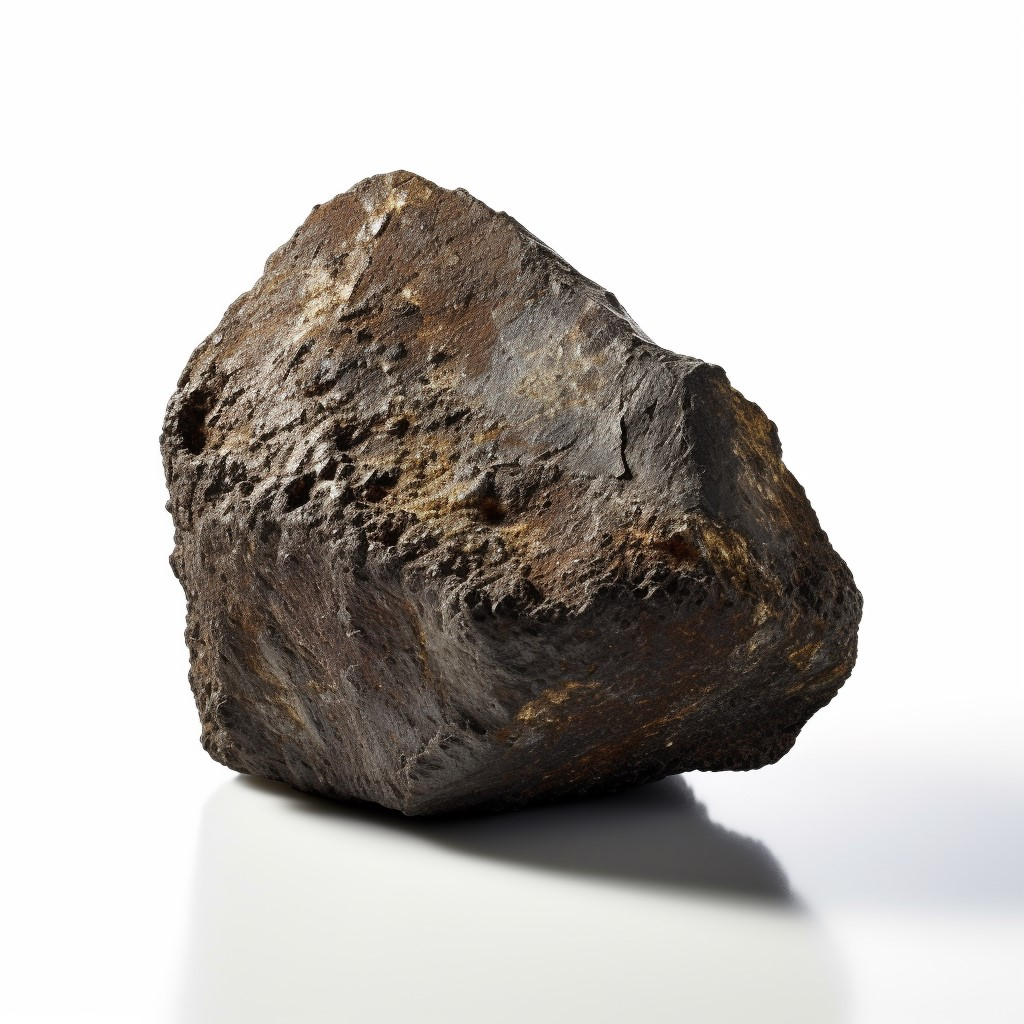 Source: Midjourney (2023, May 31). AI image of an aerolite meteorite. midjourney. midjourney.com Short definition: An Aerolite is a stony meteorite that
comes from the asteroid belt. Detailed Definition: In astronomy, an aerolite
is a type of meteorite that is composed primarily of rock and minerals. They
are believed to originate from the asteroid belt, a region between Mars and
Jupiter where many small bodies orbit the Sun. Aerolites are formed from the
debris of collisions between asteroids and are made up of a variety of minerals,
including silicates and oxides. They are different from iron meteorites, which
are composed primarily of iron and nickel. Etymology: aero - air+ -lite - (used to from names of rocks and minerals) Sample Sentence(s):
"The museum's collection includes a small aerolite from the asteroid belt." "The aerolite that landed in the farmer's field was later determined to be a piece of the asteroid Vesta." "Many scientists study aerolites to learn more about the composition of the early solar system." Translations: French: aérolithe German: Steinmeteorit Polish: aerolit Links to videos/articles: https://www.britannica.com/science/stony-meteorite | ||
Almucantar | ||
|---|---|---|
Media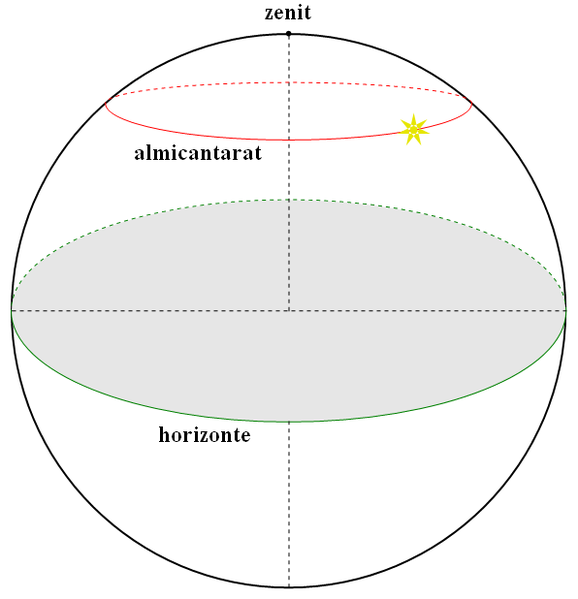 DefinitionsAlmucantar (also known as almucantarat, almacantara) is a circle of the celestial sphere parallel to the horizon. Stars belonging to the same almucantar have the same altitude. Detailed Definition
Almucantar is commonly defined by the arc on the celestial sphere, characterized by the zenith angle, which represents half of its angular magnitude. The almucantar plane refers to a plane within the celestial sphere that is formed by the almucantar. A solar almucantar specifically denotes an almucantar plane used for measuring the irradiance of the Sun. Etymology
From French almucantarat, from Arabic almuqanṭarāt"circles of celestial latitude" , from qanṭara"arch" Sample Sentence(s)The Sun and the Moon seized their almucantar and remained there for a moment, dividing the world into day and night.
Translations of Terms/Concepts into Partner LanguagesFrench
l'almicantarat German
der Almukantarat Italian
l’almucantarat Polish
almukantar, almukantarat Swedish
almicantarat Additional Translations of Terms/Concepts into Other LanguagesRussian
альмукантарат
Ukrainian
альмукантарат
Links to Videos/Articles:The Editors of Encyclopaedia Britannica. (1998a, July 20). Almucantar | astronomy. Encyclopaedia Britannica. Retrieved [ 06.14.2023 ], from https://www.britannica.com/science/almucantar | ||
Analog habitat | |||
|---|---|---|---|
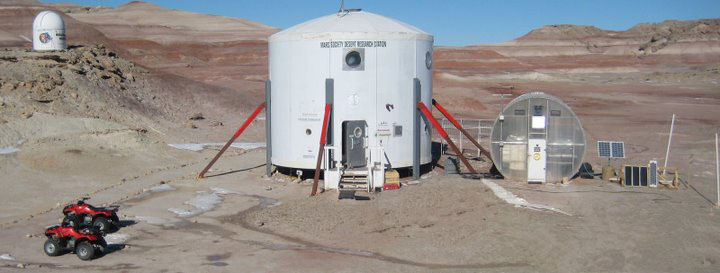 Mars Desert Research Station - an analog habitat in the middle of a desert in Utah Source: Wikipedia An analog habitat is a facility that is set up to imitate martian or lunar conditions on earth. Detailed Definition: An analog habitat is a base meant to simulate a space habitat or colony. It is designed to test and study the feasibility of living in such a habitat. Analog habitats are used to test technologies and systems that could be used in a real space habitat, and to study the psychological and social effects of living in a closed environment without the risks and cost of an actual space mission. Etymology: From Latin habitō (“I live or I dwell”). Sample Sentence(s): An analog habitat was set up in the middle of a desert. Translations: French: habitat analogique German: analoger Lebensraum Polish: habitat analogowy Swedish: analog livsmiljö Links to Videos/Articles: https://www.sciencedirect.com/science/article/pii/S2352309321000018 | |||
Antimatter | ||
|---|---|---|
Media: 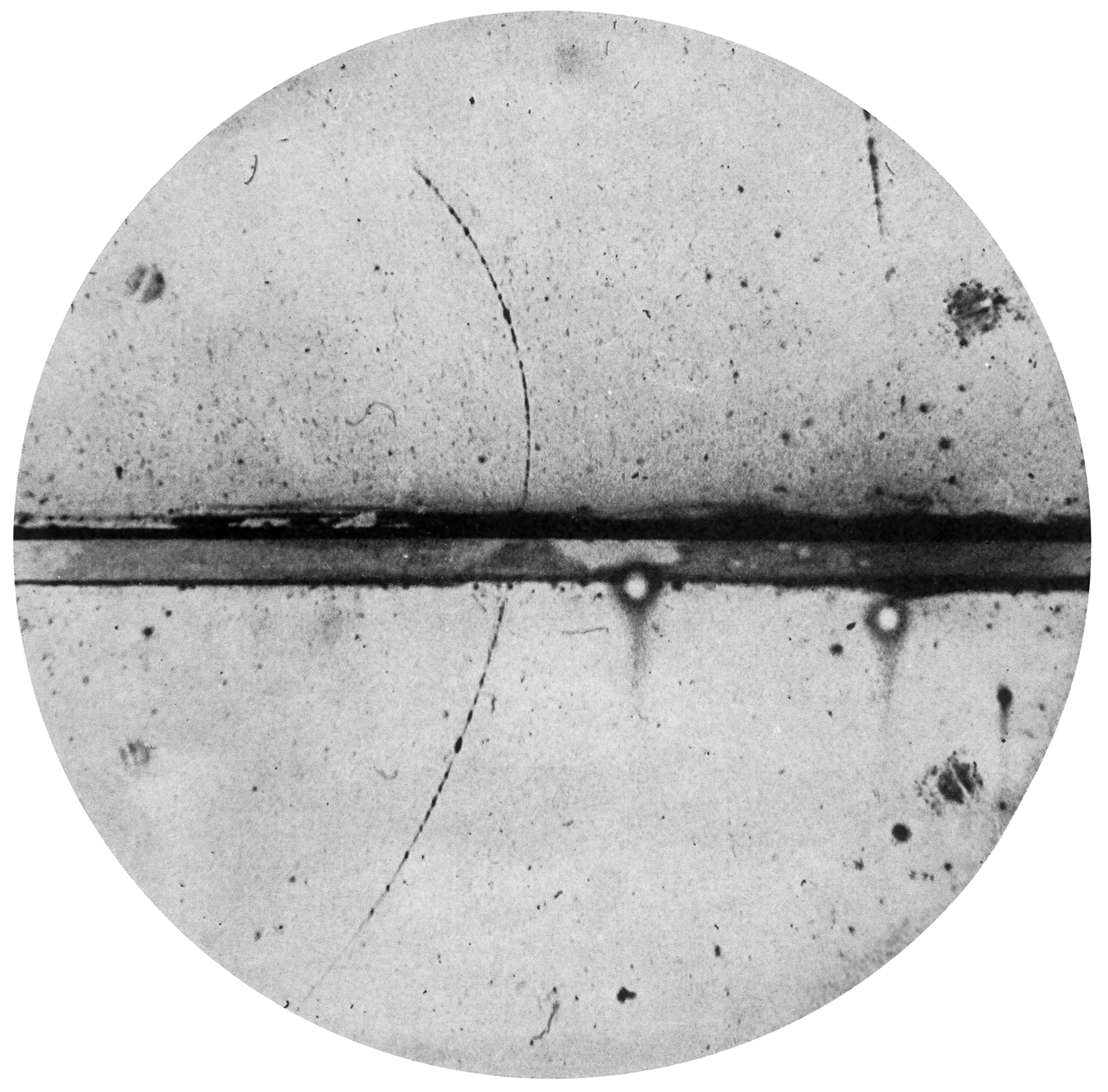 Media: Carl D. Anderson (1905–1991) - Anderson, Carl D. (1933). "The Positive Electron". Physical Review 43 (6): 491–494. DOI:10.1103/PhysRev.43.491. Short Definition: Antimatter is a type of matter which takes on exactly reverse properties to normal matter, considering charge, parity and time in a symmetric matter. Properties such as mass and acceleration are the same to regular matter, even though some are exactly opposite. Where in normal matter electrons have negative charge, antimatter has its own 'positrons' which behave the same as electrons but are positively charged. Detailed Definition: Antimatter is a type of matter which has certain properties flipped. As matter is all around us and is a building block of our universe, antimatter also has a place in our universe. This type of matter has an obvious relation with regular matter. When the two come into contact, they are both annihilated and turn into pure energy. Antimatter has been in our universe since the beginning according to the Big Bang theory. There is far less antimatter in the universe than regular matter, but it constantly gets created through radiation, decay and even lightnings, to shortly after being destroyed by contact with electrons. Antimatter is a well-defined concept in physics and is used in medical PET (Positron emission tomography) scans to form images of our bodies. The term is connected to many other concepts with 'anti-' prefix, as Antimatter is a general concept describing particles with inverse properties to the regular ones. Etymology: The prefix 'anti' from Greek, meaning 'something opposite' and 'matter' from Anglo-French 'materie' meaning 'a substance'. Sample Sentence(s): 1. At CERN, physicists make antimatter to study in experiments. The starting point is the Antiproton Decelerator, which slows down antiprotons so that physicists can investigate their properties. 2. Antimatter and regular matter annihilate each other at contact into pure energy. Translations: French - Antimatière German - Antimaterie Italian - Antimateria Polish - antymateria Swedish - Antimateria | ||
Aphelion | ||
|---|---|---|
 Source: Vitalik1986 (2011, March 26). Perihelios-aphelion. wikimedia commons. https://commons.wikimedia.org/w/index.php?curid=14702160 Short definition: The point in the orbit of a planet or other celestial body that is farthest from the sun. Detailed Definition: Aphelion is the point in the orbit of a celestial body where it is farthest from the sun. It is the opposite of perihelion, which is the point in the orbit where the celestial body is closest to the sun. The distance between a celestial body and the sun varies during its orbit due to the elliptical shape of the orbit. The aphelion is the point where the distance is at a maximum. Etymology: aphelios - far from the sun aph - from and helion - the sun Sample Sentence(s):
"Mars reaches its aphelion in July, when it is about 250 million miles from the sun." "The aphelion of Earth's orbit occurs in July, when it is about 3.1 million miles farther from the sun than at perihelion in January." "The aphelion of Pluto's orbit is about 49.3 billion kilometres, while its perihelion is about 29.7 billion kilometres." Translations: French: aphélie German: Aphel Polish: aphelium Links to videos/articles: https://www.britannica.com/science/aphelion https://www.jpl.nasa.gov/videos/whats-up-january-2021 | ||
Apogee | |||
|---|---|---|---|
Source: Short Definition: An apogee is a point in an elliptical orbit, which is considered to be the farthest point from Earth. Detailed Definition: There are two sides in any elliptical orbit, with the names referring to the primary body in the orbit. The closest and farthest points are referred to by, respectively, the prefixes peri- and apo-. The suffix is determined by the primary body, which in the case of Earth is -gee. Therefore, an apogee is the term describing the farthest point on the elliptical orbit of Earth. A satellite is at its slowest when travelling through the apogee. Etymology: "apogee" - French apogée, Latin apogaeum, Greek apogaion - point at which the Moon is farthest from the Earth "apo-" - Greek apo, Avestan apa, Latin ab - off, away, away from "Gaia" / "ge" - Greek Gaia / gaia - a titan, personification of Earth Sample Sentence(s): A satellite that travel around a celestial body is at its slowest whenever the satellite is at its apogee. Translations of Terms/Concepts into Partner Languages French: Apogée German: Höhepunkt Polish: apogeum Swedish: Höjdpunkt Links to Videos/Articles: https://www.allthescience.org/what-is-an-apogee.htm | |||
Ariane 5 | |||
|---|---|---|---|
 https://en.wikipedia.org/wiki/File:Ariane_5_with_James_Webb_Space_Telescope_Prelaunch_(51773093465).jpg Author: Unknown Year: (n.d.) Title: Ariane 5 with James Webb Space Telescope Prelaunch Description: Ariane 5 rocket with the James Webb Space Telescope before launch Retrieved Date: May 29, 2023, from https://en.wikipedia.org/wiki/File:Ariane_5_with_James_Webb_Space_Telesco pe_Prelaunch_(51773093465).jpg Author: Unknown Year: (n.d.) Title: Ariane 5 with James Webb Space Telescope Prelaunch Description: Ariane 5 rocket with the James Webb Space Telescope before launch Retrieved Date: May 29, 2023, from https://en.wikipedia.org/wiki/File:Ariane_5_with_James_Webb_Space_Telesco pe_Prelaunch_(51773093465).jpg Definitions Short Definition Ariane V is a heavy-lift space launch vehicle developed by the European Space Agency. It is designed to deliver payloads, including satellites and space probes, into geostationary transfer orbit. The Ariane V rocket consists of two main stages, multiple solid rocket boosters, and a cryogenic upper stage, allowing it to launch large and heavy payloads into space. Detailed Definition Ariane V is a powerful rocket designed in 2021 to send satellites and spacecraft into space. It was created by the European Space Agency, ESA and is part of a family of rockets called Ariane. The rocket has two main parts, or stages, that work together to launch the payload into space. The first stage has two powerful engines that burn solid fuel for about two minutes. After that, they detach and the second stage takes over. The second stage has a liquid fuel engine that takes the payload higher and faster until it reaches the desired orbit. Ariane V is very reliable and has been used for many different types of missions, such as launching communication satellites, Earth observation satellites, and scientific missions. Ariane V can carry very heavy payloads, which makes it a perfect choice for launching big commercial satellites. Etymology Ariane is a name that comes from Greek mythology, specifically from the story of Theseus and the Minotaur. In the story, Theseus, a Greek hero, is sent to Crete to defeat the Minotaur, a monster with the head of a bull and the body of a man. He is aided in his mission by Ariane, she gives Theseus a ball of thread to help him navigate through the maze where the Minotaur lived. With her help, Theseus was able to kill the monster and escape the maze. The name Ariane was chosen for the European Space Agency's rocket family because it represents the idea of finding a way through complex and difficult challenges, just as Theseus found his way through the labyrinth with Ariane's help. The rockets in the Ariane family are designed to help humans explore space, which is one of the most complex and challenging endeavours for humans. Sample Sentence(s) Among the many European satellites launched by Ariane have been Giotto, the probe to Halley’s Comet; Hipparcos, the stellar distance-measuring satellite; Rosetta, a comet rendezvous mission; and Envisat, a large Earth-observing satellite. Author: Britannica Year: (n.d.) Title of the article: Ariane (European launch vehicles) Title of the website or source: Encyclopedia Britannica Retrieved Date: May 29, 2023 URL: https://www.britannica.com/technology/Ariane- European-launch-vehicles The European Space Agency's Ariane V rocket was successfully launched into space, carrying a satellite that will provide internet access to remote areas. Translations of Terms/Concepts into Partner Languages: French: Ariane V German: Ariane V Italian: Ariane V Polish: Ariane V Swedish: Ariane V Additional Translations of Terms/Concepts into Other Lang... Russian: Ариан 5 Links to Videos/Articles: ● https://www.esa.int/Enabling_Support/Space_Transportation/Launch_veh icles/Ariane_5 ● https://youtu.be/UaYZieeCX68 | |||
Asteroid | ||
|---|---|---|
 Source: Burned Pineapple Productions (2018, June 14). asteroid. flickr. https://www.flickr.com/photos/51686021@N07/42075207904 Short definition: An asteroid is an astronomical object in direct orbit around the sun, also known as a “minor planet”. They can be rocky, metallic, or icy bodies with no atmosphere and range in a wide spectrum of sizes and shapes. Long definition: An asteroid is an astronomical object in direct orbit around the sun, also known as a “minor planet”. They can be rocky, metallic, or icy bodies with no atmosphere and vary greatly in shape and size, from 1000 km to 1 m across. The three largest asteroids (Ceres, Vesta and Pallas) look very much like miniature planets by being almost spherical and containing some partly differentiated interiors. They are thought to be surviving protoplanets. Nevertheless, a wide majority of asteroids are smaller and irregularly shaped and are thought to be shattered remnants of planetesimals, which are bodies that never grew large enough to become planets within the formation of the solar system (solar nebula) or fragments of bigger bodies. The physical composition of asteroids is in most cases still poorly understood and varies from asteroid to asteroid. They are classified by their emission spectra and are divided generally in three big groups: C-type, M-type, and S-Type, named after their compositions carbon-rich, metallic, and salicaceous, respectively. In the main asteroid belt there are two primary types of asteroids: dark, volatile-rich asteroid consisting of the C-type and P-type, and dense, volatile-poor asteroids consisting of the S-type and M-type asteroids.Etymology: From Greek asteroeidēs ‘starlike’, from astēr ‘star’. Sample Sentence(s):
Translations of Terms/Concepts into Partner Languages
Links to Videos/Articles:
| ||
Astrobiology | ||
|---|---|---|
 Source: Midjourney (2023, May 11). Artistic AI Illustration of Astrobiology. midjourney. midjourney.com Short Definition:Astrobiology is an interdisciplinary field of research concerned with the origin, evolution, distribution and future of life in the universe. It encompasses research in astronomy, biology, chemistry, geology, and physics. Detailed Definition:The goal of this study is to understand more about the origin and evolution of life on Earth, planetary system formation, organic compounds in space, and whether or not life exists or might exist elsewhere. Especially the frozen moons of the outer solar system, particularly Europa and Enceladus, as well as Mars, are of significant astrobiological interest. These solar system bodies are the focus of current and future multinational space missions, for example in the DLR. Etymology:
astro - Ancient Greek - ἄστρον (astron) "star" bio – Ancient Greek - βίος (bíos) “life” logy – Ancient Greek -λογία (logía) “branch of study” or “to speak” Sample Sentence(s):
“The research field of astrobiology is gaining more and more importance in the last decades.” “Did you see the documentary on astrobiology last week?” Translations:
Links to Videos/Articles:
https://www.dlr.de/me/en/desktopdefault.aspx/tabid-2016/ | ||
Astronomy | |||
|---|---|---|---|
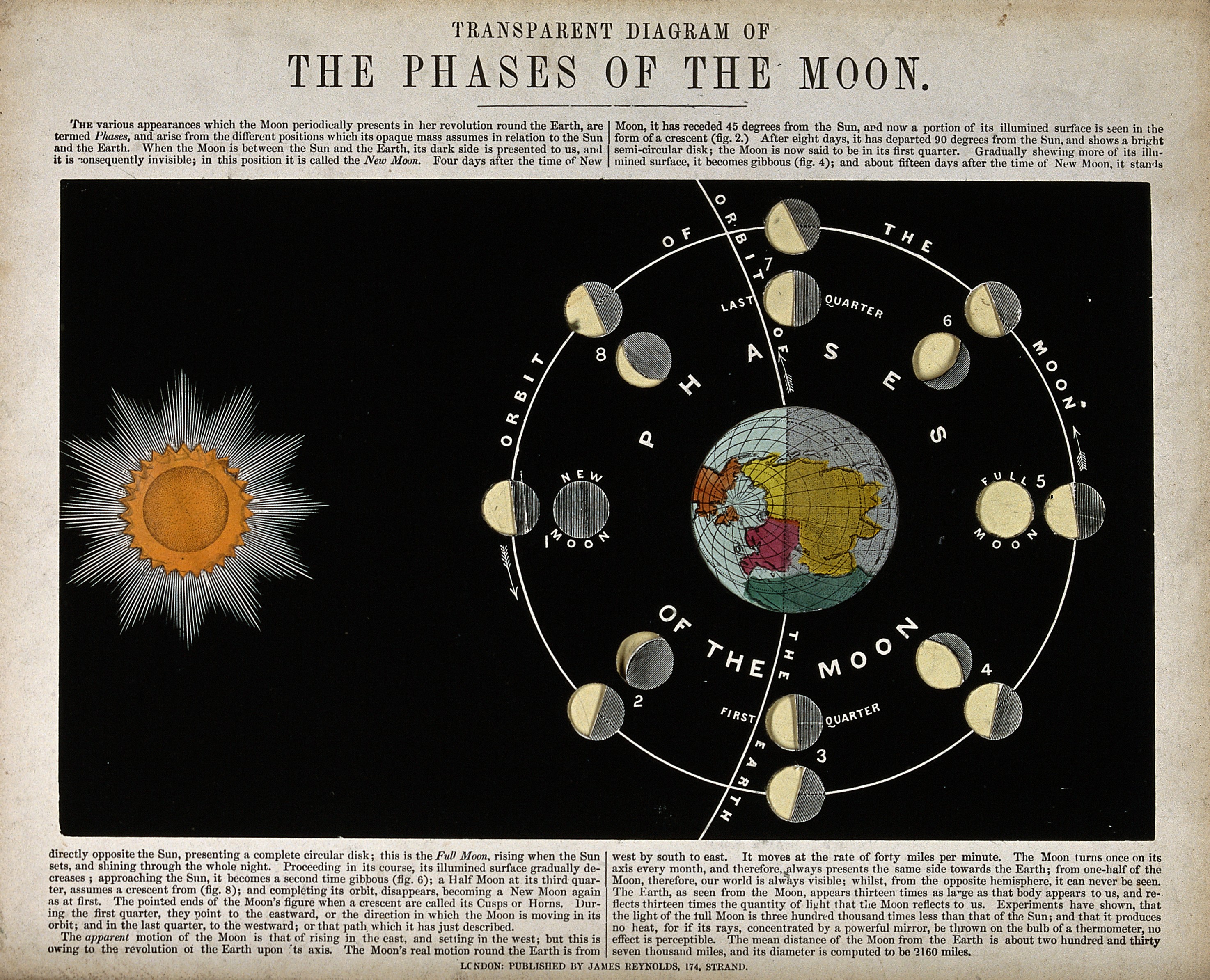 Image/Video/Audio: Diagram: Phases of the Moon Image/Video/Audio Source: https://upload.wikimedia.org/wikipedia/commons/8/8b/Astronomy%3B_a_diagram_of_the_phases_of_the_moon._Engraving._Wellcome_V0024718.jpg Short Definition:
Astronomy is a positive science that includes the discovery, observation, interpretation and recording of all objects and phenomena in space. Before 17th century, astronomy, which worked only to observe and interpret the positions and motion capabilities of observable celestial bodies due to technological inadequacies, after advanced its agenda in all space with the advancement of technology. Detailed Definition:
Astronomy, which aims to investigate first our galaxy and then the whole space in the light of the physics and chemistry sciences that have developed since the 19th century, it also includes to investigate structures and movements of celestial bodies, the formation of galaxies and the chemical analysis of this formation, and the distances and brightness levels of these objects and phenomena. There are 4 main sub-branches of today's contemporary astronomy. These are; Astrophysics: Examines the harmony and application of defined laws of physics in space. Astrometry: It deals with mapping the locations of space objects and their distances from each other. Astrogeology: It deals with the elucidation and understanding of the structure and reserves of materials in space. Astrobiology: Examines possible extraterrestrial life. All these sub-domains contain more of an observable method besides being experimental due to he lack of possibilities we have today in regards with technology.
Etymology:
‘Astron’ (star) – From Ancient Greek ‘Nomos’ (rule, law) – From Ancient Greek
Sample Sentence(s):
''Astronomy has expanded to include astrophysics, the application of physical and chemical knowledge to an understanding of the nature of celestial objects and the physical processes that control their formation, evolution, and emission of radiation.'' (Evans, J. (2023, January 5). Astronomy | Definition, History, Discoveries, & Facts. Encyclopedia Britannica. https://www.britannica.com/science/astronomy) ‘’Astrology can be fun to think about, but it’s different from astronomy. Astrology is not science!’’ (Cloudflare CAPTCHA. (n.d.). https://www.amnh.org/explore/ology/astronomy/what-is-astronomy) Translations of Terms/Concepts into Partner Languages: French:
Astronomie German:
Astronomie Polish:
astronomia Swedish:
Astronomi Turkish: Astronomi
Links to Videos/Articles:
Astronomic. (2015, July 7). Astronomy: Explained | Astronomic [Video]. YouTube. https://www.youtube.com/watch?v=XinkicMVzLs Cloudflare CAPTCHA. (n.d.). https://www.amnh.org/explore/ology/astronomy/what-is-astronomy E., E. (2022, May 12). 17 branches of astronomy. Earth How. https://earthhow.com/what-is-astronomy/ Evans, J. (2023, January 5). Astronomy | Definition, History, Discoveries, & Facts. Encyclopedia Britannica. https://www.britannica.com/science/astronomy | |||
Atmosphere | |||
|---|---|---|---|
 Source: Gatley, R. (2018, January 27). Cruising at 47000 feet over Kazakhstan. Shot with an 8mm fisheye lens.. unsplash. https://unsplash.com/photos/oxgK2f_rxDc Definition:The mass of gas that surrounds an astronomical body, such as a planet, and is held in place by the gravity of this body. Etymology:From Greek ατμός (atmos)'vapor' + σφαιρα (sphaira)'sphere' Translations:
| |||
Aurora | ||
|---|---|---|
 Image/Video/Audio Source: Hemmingsen, J.A. (2016, January 8). aurora borealis in Ersfjordbotn. flickr. https://www.flickr.com/photos/64104971@N02/24226248576 Short Definition: An aurora is a phenomenon caused by the Sun (star). A bust of electrified gas (solar wind) from the star approaches planets. Small particles travel down the magnetic field lines towards both poles. Particles from the star interact with gas particles in the atmosphere, causing the creation of the light in the sky. Depending on the atmosphere composition, the colour of the aurora might be different. Oxygen glows green and red, nitrogen blue and purple. Auroras can appear on every celestial object that has an atmosphere and magnetic field. On Earth, the aurora near the North Pole is called an aurora borealis (northern light) and one near the South Pole is called an aurora australis (southern light). Etymology: “Aurorae are considered to be one of the seven natural wonders of the world.” (source: https://astronomy.swin.edu.au/cosmos/a/Aurora) Translations: French: German: Polish: Swedish: Spanish: Links to Videos/Articles: | ||

